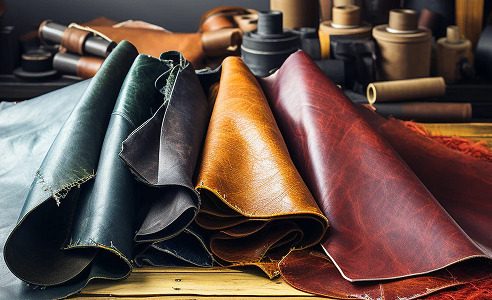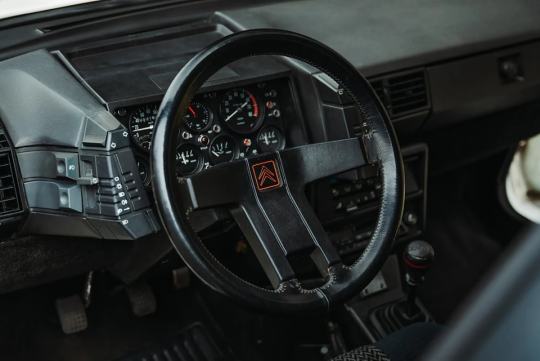#Automotive Interiors
Explore tagged Tumblr posts
Text
Exploring the Cooling Fabrics Market: Trends, Opportunities, and Applications

The Cooling Fabrics Market is making waves across industries, driven by the growing demand for innovative, comfortable, and sustainable materials. These fabrics, designed to regulate temperature and enhance comfort, are gaining traction in diverse applications, including apparel, medical care, bedding, automotive interiors, home furnishings, and military gear. This article delves into the trends, key applications, and future outlook of the cooling fabrics market.
The cooling fabrics market is projected to grow from USD 2.4 billion in 2023 to USD 3.6 billion by 2028, at a CAGR of 7.7%.
Market Drivers: What’s Fueling the Demand?
Rising Awareness of Thermal ComfortConsumers are increasingly prioritizing fabrics that provide optimal thermal regulation. This demand is fueled by climate change, which has heightened the need for clothing and materials that ensure comfort in extreme temperatures.
Technological InnovationsAdvances in fabric technology, including phase-change materials (PCMs), microencapsulation, and nanotechnology, have enabled the development of high-performance cooling fabrics. These innovations are addressing specific needs in sectors like healthcare and automotive.
Sustainability and Eco-Conscious ConsumersThe growing focus on sustainability has led manufacturers to explore eco-friendly cooling fabric solutions. Many are incorporating recycled materials and reducing their carbon footprint to appeal to environmentally conscious buyers.
Key Applications Across Industries
Apparel & ClothingCooling fabrics have revolutionized the fashion and sportswear industry. From athletic apparel to casual wear, these fabrics wick moisture, regulate body temperature, and provide UV protection. Athletes and outdoor enthusiasts benefit from performance-enhancing features that improve endurance and comfort during activities.
Medical & HealthcareIn healthcare, cooling fabrics are utilized in patient gowns, bedding, and medical wraps. These fabrics help manage patient temperatures, reduce the risk of heat-related complications, and ensure overall comfort. For instance, cooling blankets are gaining popularity in hospitals to address fever management and post-surgical care.
Bedding & MattressSleep products like mattresses, bed sheets, and pillowcases are now being infused with cooling technologies to improve sleep quality. These fabrics regulate temperature and prevent overheating, catering to individuals who suffer from night sweats or live in warmer climates.
Automotive & TransportationIn the automotive industry, cooling fabrics are used in car seats, steering wheel covers, and interiors to enhance comfort during long drives. This is especially relevant in regions with hot climates, where maintaining a cool cabin temperature is crucial for driver and passenger satisfaction.
Home FurnishingThe demand for cooling curtains, upholstery, and cushions is rising in the home furnishing sector. These products not only enhance the aesthetic appeal of living spaces but also contribute to energy savings by reducing the reliance on air conditioning.
Military & DefenseCooling fabrics are becoming a staple in military uniforms and gear. Soldiers operating in extreme environments benefit from these fabrics' ability to regulate body temperature, prevent heat stress, and ensure mobility during missions.
Emerging Trends in the Cooling Fabrics Market
Smart FabricsThe integration of smart technology with cooling fabrics is an emerging trend. Fabrics embedded with sensors can monitor body temperature and adjust cooling properties in real-time, catering to sectors like sports and healthcare.
Expansion of Sustainable SolutionsWith increasing environmental concerns, manufacturers are focusing on biodegradable cooling fabrics and reducing the use of synthetic materials. Partnerships with sustainability-focused organizations are also driving innovation in this space.
Customization for Niche ApplicationsCompanies are tailoring cooling fabrics for specific end-use industries, such as advanced military uniforms or high-performance athletic gear. Customization is expected to remain a key differentiator in the competitive landscape.
Challenges Facing the Industry
Despite its promising growth, the cooling fabrics market faces challenges. High production costs and the complexity of developing advanced cooling technologies pose barriers to widespread adoption. Additionally, educating consumers and industries about the long-term benefits of cooling fabrics remains essential for market penetration.
Future Outlook
The global cooling fabrics market is expected to witness significant growth in the coming years, driven by rising investments in research and development and expanding applications across industries. Asia-Pacific is emerging as a key growth region, owing to its booming textile industry and increasing demand for advanced fabrics in apparel and automotive sectors.
As innovations continue to shape the market, industries such as medical, home furnishing, and military are likely to explore more sophisticated applications for cooling fabrics. This presents lucrative opportunities for manufacturers to tap into untapped markets and cater to evolving consumer needs.
To know more Download PDF Brochure :
Cooling fabrics are more than just a trend—they represent a shift towards smarter, more sustainable material solutions across industries. For experts in apparel, healthcare, bedding, automotive, home furnishing, and defense, this market offers endless possibilities for innovation, comfort, and performance enhancement.
#Cooling Fabrics Market#Apparel Industry#Medical Textiles#Bedding and Mattress#Automotive Interiors#Military and Defense#Sustainable Textiles
0 notes
Text
Flameproofing Futures: Navigating the Fire-Resistant Fabrics Market Landscape
The global fire-resistant fabrics market is witnessing growth and is projected to reach USD 5.9 billion by 2030. This growth can be credited to the increase in the demand for such materials from the chemical, oil & gas, and construction sectors. Credited to the severe guidelines for workplace safety in advanced countries. On the basis of type, the industry is divided into treated and inherent…

View On WordPress
#automotive interiors#Competitive Landscape#Fire Hazards Prevention#Fire-Resistant Fabrics Market#Flame-Resistant Materials#Home Furnishings#Industrial Safety#Investors#manufacturers#market analysis#Market Segments#opportunities#Protective Clothing#Regional Influences#Safety Industry#Textile Innovation
0 notes
Text
Synthetic Leather Market Insights: From Material Science Innovations to Consumer Preferences
The global synthetic leather market is anticipated to reach USD 66.24 billion by 2030 and is projected to grow at a CAGR of 7.87% from 2024 to 2030, according to a new report by Grand View Research, Inc. Growing awareness among consumers regarding animal exploitation, aided by programs run by organizations such as PETA, has played a major role in increasing the demand for leather alternatives. The growing supply-demand gap in the natural leather industry is also a major factor responsible for manufacturers opting for synthetic or artificial leather.

Furthermore, natural leather is obtained from animals, which has resulted in animal killings. There have been various guidelines and laws established by various countries to protect animal rights. Animal rights laws have become a major hurdle for natural leather manufacturers in several countries.
Synthetic Leather Market Report Highlights
The automotive application segment is anticipated to grow at a CAGR of 8.9% over the forecast period. Synthetic leather is used in several automotive applications such as upholstery, dashboards, headliners, seat belts, airbags, and floor & trunk carpets. It is employed in passenger vehicles, light & commercial vehicles, heavy trucks, and buses & coaches as it is lighter than real leather. Its high elasticity enables passenger comfort in addition to providing resistance against hot & cold temperatures and spillage. The product also increases the durability of automotive interiors and reduces maintenance requirements
The PU synthetic leather segment held the largest market share of 60.8% in 2023. PU leather has good elasticity, resistance to solvents, high tensile strength, and skin abrasion resistance. These properties have been a major help in increasing its market penetration in the automotive, footwear, and furnishing sectors
Asia Pacific dominated the synthetic leather market. China is the largest market for synthetic leather in Asia Pacific. It is also among the major consumers of leather in primary application segments such as automotive, furnishing, and clothing. Automotive and footwear industry, which are vital application segments for synthetic leather, are witnessing a rapid growth in the country. China mainly imports synthetic leather from India, Korea, and Italy
In December 2021, Dow, a U.S.-based company, announced the launch of LUXSENSE, a silicone synthetic leather. It is the world's first high-end silicone synthetic leather material designed to meet specifications in furniture, wearable devices, fashion, transportation seating and interiors, and consumer electronics, offering unique features
For More Details or Sample Copy please visit link @: Synthetic Leather Market Report
Manufacturing activities of natural leather, especially tanning, lead to pollution of the nearby surroundings. This is another major reason leading to the shift in preference toward synthetic leather. Stringent environmental laws and government regulations have been influential in promoting the demand for synthetic leather.
India is among the world’s top five producers of leather. However, the Central government of India has banned the slaughter of cows for meat and leather, which has adversely affected the leather industry in the country. Most of India’s leather and meat industry comprises unorganized players, owing to which a reduction in the annual production from these industries is not feasible to estimate. The market situation has widened the demand-supply gap of genuine leather, which is expected to supplement the India PU market’s growth over the forecast period.
SyntheticLeather #FauxLeather #SustainableFashion #EcoFriendlyMaterials #ArtificialLeather #LeatherAlternatives #TextileIndustry #FashionTech #MaterialInnovation #EnvironmentalSustainability #SyntheticMaterials #VeganLeather #InnovationInTextiles #FashionIndustry #AutomotiveInteriors
#Synthetic Leather#Faux Leather#Sustainable Fashion#Eco-Friendly Materials#Artificial Leather#Leather Alternatives#Textile Industry#FashionTech#Material Innovation#Environmental Sustainability#Synthetic Materials#Vegan Leather#Innovation In Textiles#Fashion Industry#Automotive Interiors
0 notes
Text
Global Flame-Retardant Market Analysis by 2023-2032: AMR
0 notes
Text

#menswear#Mens Fashion#menstyle#mens style#mensfashion#Suits#lifestyle#GQ#watches#travel#rolex#mercedes#ferrari#porsche#automotive#mclaren#supercar#interiors#Dapper#Autos#land rover#vintage cars#classic cars#goyard#loro piana#luxury
500 notes
·
View notes
Text

#mercedes#classic cars#classic car#old cars#old car#vintage cars#automobiles#automotive#auto#automobile#car photo#cars#car photography#luxury car#expensive#rich life#luxury aesthetic#luxurious#luxury#car industry#car interior detailing#vintage aesthetic
178 notes
·
View notes
Text

That is one way to keep an eye on your 🚗 car!
#toya's tales#style#toyastales#toyas tales#home decor#interior design#open floor plan#floor to ceiling windows#glass#glass wall#november#fall#autumn#porsche#vintage cars#cars#car#automotive#automobile#autos#leather sectional#leather sofa#leather seats#grafitti#cactus#modern design#modern home#living room#concrete floor#modern living room
440 notes
·
View notes
Photo

Retro Car Interior (1980)
73 notes
·
View notes
Text

#Rolls-Royce#leather#bulls#car interiors#luxury#craftsmanship#quality#automotive#materials#manufacturing
92 notes
·
View notes
Text

30 notes
·
View notes
Text

The new olympics
@Sr_formica
#80s art#80s nostalgia#mercedessl#olympics#1984#80s style#3dart#80s aesthetic#vaporwave#80s#vintage car#vintage#artists on tumblr#los angeles#80s fashion#automotive#retro aesthetic#aestethic#classic car#der klassiker#interiors#sr formica#digital art#my artwok#retro#retrowave#olympic games#exterior#3dartist#3drender
7 notes
·
View notes
Text
Driving Innovation in Non-Woven Adhesives: Unleashing the Power of Bonding
Fibers used in non-woven textiles are held in place by non-woven adhesives. Plasticizers, base polymers, and antioxidants make up these adhesives. They have excellent processability, high cohesion strength, high elasticity, softness, low odor, and heat resistance. Additionally, they are utilized for internal engine compartment coverings, head, and wall liners, and other vehicle liners and…

View On WordPress
#application-specific#automotive interiors#bonding solutions#Construction#cost-effectiveness#durability#efficiency#filtration#hygiene products#market trends#Medical Devices#non-woven adhesives#packaging#performance#sustainability#technological advancements#versatility
0 notes
Photo

Citroën BX 4TC
144 notes
·
View notes
Text

@ deklerph
Enjoy our curated content? You can support us here.
#car#cars#auto#automotive#car interior#photography#car photography#dashboard#glam#glam aesthetic#expensive taste#luxury lifestyle#luxe aesthetic#curators on tumblr
55 notes
·
View notes
Text

#menswear#Mens Fashion#menstyle#mens style#mensfashion#Suits#lifestyle#GQ#watches#travel#rolex#mercedes#ferrari#porsche#automotive#mclaren#supercar#interiors#Dapper#Autos#land rover#vintage cars#classic cars#goyard#loro piana#luxury
186 notes
·
View notes
